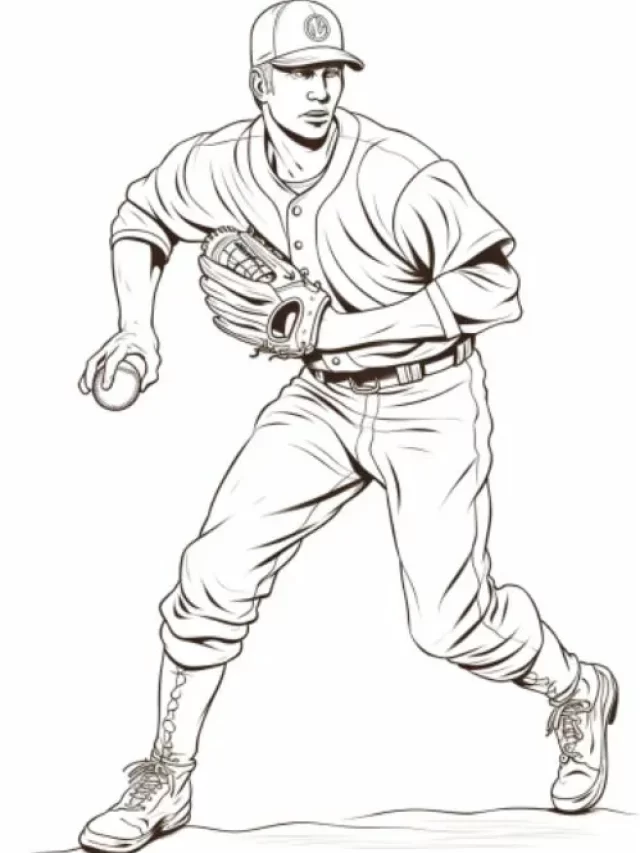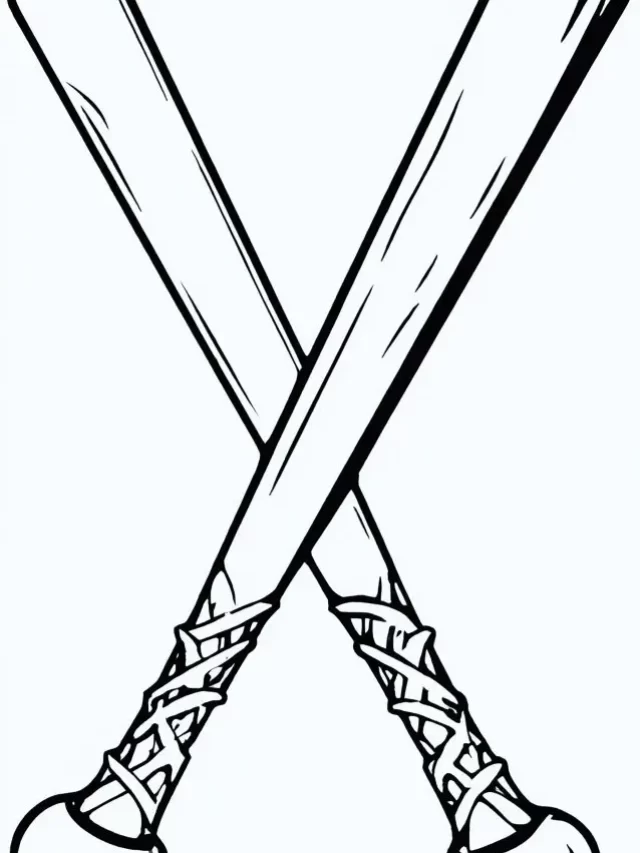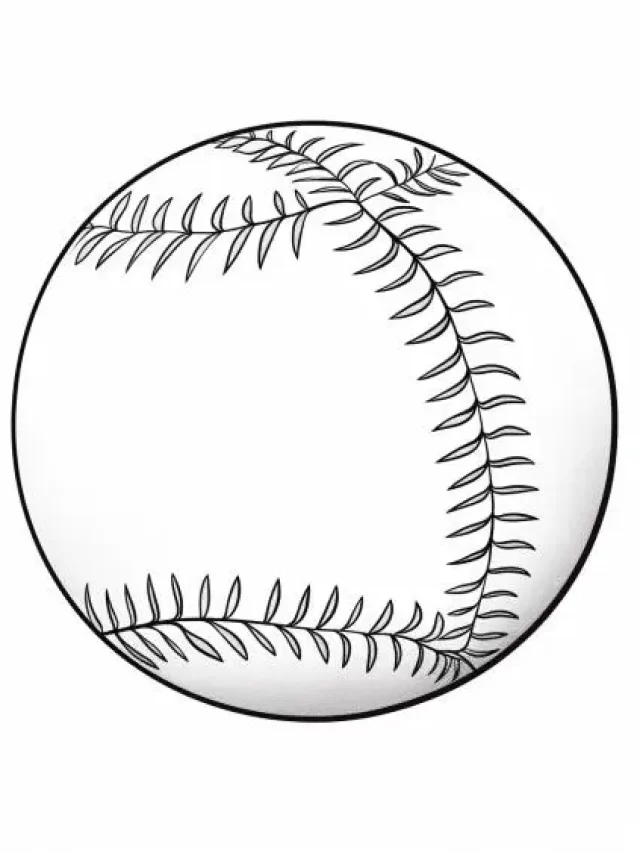 Image Credit-Pinterest
Image Credit-Pinterest
A check swing, in the world of baseball, is a crucial and often debated maneuver that occurs when a batter initiates a swing but successfully halts it before the bat crosses the front of home plate. This split-second decision, involving finesse and precision, has immense significance in the game, influencing umpire calls, team strategies, and even the outcome of matches.
Understanding check swings is paramount for players, enthusiasts, and even casual viewers. It goes beyond the basic mechanics of a swing, delving into the intricate rules that govern this particular action on the diamond. A successful check swing can save a batter from committing to a full swing on a pitch they’ve decided isn’t favorable, offering a tactical advantage.
The importance of comprehending check swings extends beyond the field, impacting discussions among fans, analysts, and players alike. Umpires, tasked with making swift and accurate judgments, often face challenges when determining whether a batter has successfully checked their swing. This nuanced aspect of the game sparks debates, adding an extra layer of excitement to baseball discourse.
In this comprehensive guide, we embark on a journey to demystify check swings, exploring the rules, judgments, and unique insights associated with this fundamental yet intricate element of baseball. As we dissect the various facets of check swings, readers will gain a deeper appreciation for the sport’s complexity and the strategic decisions that unfold in the blink of an eye. So, let’s unravel the mysteries behind check swings and step into the fascinating world of baseball intricacies.
What Constitutes a Check Swing?
Definition and Interpretation
A check swing, at its core, is a complex maneuver where a batter initiates a swing but makes a conscious effort to stop the motion before the bat crosses the front of home plate. The crucial aspect lies in the umpire’s judgment of whether the batter successfully checked the swing or committed to a full one. The interpretation varies and often hinges on factors such as the position of the wrists, barrel movement, and the overall intent of the batter.
Rules Governing a Check Swing
According to official baseball rules, there is no precise definition of a check swing. Instead, the decision is left to the discretion of the home plate umpire. Umpires evaluate factors like the barrel’s movement, whether the wrists crossed the plate, and if the batter demonstrated a genuine attempt to avoid swinging. While there are general guidelines, the lack of a strict definition makes it a challenging call, leading to frequent debates and discussions.
Common Misconceptions
One common misconception surrounding check swings is the belief that the bat must cross the front of the plate for it to be considered a swing. In reality, the decision is based on the intent and movement leading up to that point. Additionally, there’s a misconception about whether a player can appeal a check swing. Contrary to popular belief, the opposing team cannot directly appeal to the base umpire; instead, the home plate umpire typically makes the call.
Understanding these nuances is pivotal for players, coaches, and fans alike, as they shape the dynamics of a game. Delving deeper into the intricacies of what constitutes a check swing sheds light on the challenges umpires face and the strategic decisions batters make in the blink of an eye. As we navigate through this section, readers will gain a comprehensive understanding of the rules and interpretations that govern check swings in the realm of baseball.
The Role of Umpires
How Umpires Make Judgment Calls
The role of umpires in determining the outcome of a check swing is pivotal, and their decision-making process is a delicate art. Umpires stand behind the catcher, equipped with a front-row seat for the batter’s actions. Their judgment considers a combination of factors, including the position of the wrists, the barrel’s movement, and the batter’s overall intent. The split-second nature of a check swing places immense pressure on umpires to make accurate decisions swiftly.
Umpires often rely on keen observation and experience honed through countless games. They undergo rigorous training to understand the subtle nuances of a check swing, refining their ability to decipher the fine line between a genuine attempt to check the swing and a committed motion.
Instances Where a Check Swing Is Considered a Bunt
In certain instances, a check swing can take on the characteristics of a bunt. This occurs when a batter, while attempting to check the swing, makes contact with the ball unintentionally. Umpires evaluate the contact’s impact, trajectory, and the batter’s intent to determine whether it aligns more with a check swing or a bunt. The distinction is crucial, as it influences the outcome of the play and subsequent base running.
Exploring the Nuances of Judgment Calls
The nuances of judgment calls in baseball extend beyond the binary decision of a check swing. Umpires grapple with the challenge of ensuring consistency in their calls while considering the uniqueness of each play. The unpredictability of the game introduces a layer of complexity as judgment calls become subjective in certain situations. Exploring these intricacies sheds light on the human element woven into the fabric of baseball, where umpires play a crucial role in shaping the narrative of each match.
As we delve into the role of umpires, readers will gain insights into the challenges faced by these arbiters of the game, appreciating the intricacies involved in making split-second decisions that can alter the course of a baseball contest.
MLB The Show and Check Swings
Discussing the Virtual Representation of Check Swings in the MLB The Show Game
The marriage of technology and baseball unfolds seamlessly in the virtual realm of MLB The Show, offering players an immersive experience that mirrors the nuances of the real game. When it comes to check swings, the game’s developers have intricately captured the essence of this crucial baseball maneuver. Players navigate through the same dilemmas as their real-life counterparts, deciding in a split second whether to commit to a swing or skillfully hold back.
In MLB The Show, the virtual representation of check swings involves a sophisticated algorithm that considers factors like controller input, player timing, and the virtual batter’s animation. The game aims to provide a lifelike experience where the success or failure of a check swing depends on the player’s decision-making and timing skills.
experienceComparisons Between Real-Life Rules and the Game’s Mechanics
While MLB The Show strives for authenticity, certain disparities inevitably arise when comparing virtual check swings to real-life rules. The game’s mechanics, governed by code and algorithms, introduce a level of predictability that differs from the unpredictable nature of real baseball. In the virtual realm, the outcome of a check swing may be influenced by predefined parameters, whereas real-life check swings involve a multitude of variables, making each scenario unique.
Players often find themselves making mental adjustments when transitioning from the video game to the actual baseball field. This section explores the parallels and deviations between MLB The Show’s virtual representation of check swings and the real-life rules that govern these actions on the diamond. By dissecting these comparisons, readers gain insights into the evolving landscape where technology and tradition intersect, shaping the way we perceive and experience the game of baseball.
The Meaning Behind Check Swings
Understanding the Significance of Checking One’s Swing
Checking one’s swing holds profound significance in the strategic arsenal of a baseball player. It transcends the basic act of deciding whether to swing at a pitch; rather, it becomes a tool for batters to assert control over the game’s dynamics. Successfully checking a swing allows a batter to exercise restraint, holding back from committing to a pitch that may not be in their favor. This element of control becomes particularly crucial in high-stakes situations, where precision and timing can be the difference between a hit and a miss.
The act of checking one’s swing is not merely a defensive move but a strategic decision that can influence the flow of an entire at-bat. Batters leverage this maneuver to disrupt the pitcher’s rhythm, forcing them to reassess their strategy and potentially leading to more favorable pitches in subsequent attempts.
Insights into Player Strategies Regarding Check Swings
Player strategies regarding check swings vary widely and often align with their overall approach to batting. Aggressive hitters may use check swings strategically to keep opposing pitchers on edge, creating an aura of unpredictability. On the other hand, more patient batters may deploy check swings as a disciplined approach, ensuring they only commit to pitches that align with their game plan.
This section delves into the mental aspect of check swings, exploring how players navigate the delicate balance between aggression and restraint. Insights from professional players and coaches shed light on the psychology behind the decision to check a swing, revealing the calculated maneuvers and tactical considerations that contribute to a player’s overall effectiveness at the plate.
By unraveling the meaning behind check swings, readers gain a deeper appreciation for the strategic elements woven into every at-bat. The section aims to demystify the intentional choices players make, showcasing how check swings are not just reflex actions but deliberate moves that shape the ebb and flow of baseball encounters.
Clarifying Common Questions
What Does It Mean to Check Your Swing?
Checking your swing in baseball involves the batter’s intentional attempt to halt the momentum of their bat mid-swing, preventing it from fully crossing the front of home plate. The primary goal is to avoid committing a swing when the batter deems the pitch unfavorable. It’s a delicate maneuver that requires a combination of wrist control, body awareness, and split-second decision-making. Successfully checking a swing demonstrates the batter’s ability to exercise restraint and make informed choices at the plate.
Factors Considered When Determining a Checked Swing
Determining a checked swing is a nuanced process that considers various factors, and umpires play a crucial role in making this judgment. Key factors include:
- Wrist Movement: Umpires observe the movement of the batter’s wrists to ascertain whether the bat crossed the front of the plate.
- Barrel Position: The position of the barrel concerning the plate is crucial; if it doesn’t fully cross, it may be deemed a checked swing.
- Intent: Umpires evaluate the batter’s intent, considering whether there was a genuine effort to avoid swinging.
These factors collectively contribute to the umpire’s decision, and the absence of a strict definition makes checked swings one of the more subjective calls in baseball.
Addressing Common Questions and Misconceptions
This section aims to dispel common questions and misconceptions surrounding checked swings. It clarifies doubts such as whether a batter can appeal a checked swing (usually, they cannot directly appeal), the impact of the bat crossing the plate slightly, and the umpire’s role in interpreting the batter’s actions. By addressing these queries, readers gain a comprehensive understanding of the intricacies involved in determining checked swings and can navigate the debates that often arise during games.
Through clarification and exploration of common questions, this section provides readers with a deeper insight into the complexities surrounding checked swings in baseball, fostering a more informed and nuanced perspective on this essential aspect of the game.
Rulebook Insights
Examining the Official Rulebook on Check Swings
The official rulebook on check swings serves as the cornerstone for umpires and players alike, providing a framework for understanding and adjudicating this intricate aspect of baseball. The rulebook, as sanctioned by Major League Baseball (MLB), does not explicitly define what constitutes a checked swing. Instead, it places the responsibility on the home plate umpire to make a judgment call based on their interpretation of the batter’s actions.
According to the rulebook, umpires are instructed to consider the position of the batter’s wrists, the movement of the bat, and the overall intent to swing when deciding whether a check swing occurred. This lack of a rigid definition allows for flexibility in interpretation but can also lead to debates and controversies on the field.
Any Recent Rule Changes or Updates
Baseball, like any sport, is subject to rule changes and updates, and check swings are no exception. In recent years, there have been discussions within the MLB community about potentially implementing clearer guidelines for check swings. However, as of the latest available information, no significant rule changes have been officially enacted regarding the definition or interpretation of check swings.
It’s crucial for players, coaches, and fans to stay abreast of any potential modifications to the rules, as even subtle changes can have a profound impact on the dynamics of the game. This section explores the current state of the rulebook, delving into the existing guidelines and any discussions within the baseball community about potential updates to the rules governing check swings.
By examining the official rulebook and addressing the possibility of recent changes or updates, readers gain a comprehensive understanding of the regulatory framework that governs check swings in baseball. This knowledge enhances their appreciation for the intricacies involved in making and interpreting these judgment calls on the field.
Conclusion
In the intricate dance of baseball, the check swing emerges as a subtle yet impactful maneuver, a testament to the finesse and strategy embedded in the sport. Throughout this exploration, we’ve unraveled the complexities surrounding check swings, from their nuanced definition to the factors umpires consider in split-second judgments.
Understanding a check swing goes beyond its technicalities; it embodies a player’s ability to exercise control, make tactical decisions, and influence the course of an at-bat. Successful check swings not only save batters from committing to unfavorable pitches but also disrupt the pitcher’s rhythm, adding an element of unpredictability to the game.
As we’ve delved into the virtual realm of MLB The Show, compared mechanics to real-life rules, and deciphered the player psychology behind check swings, one thing becomes clear: the intricacies of this maneuver enrich the baseball experience. We’ve clarified common questions, examined the rulebook, and addressed potential updates, providing a comprehensive overview for players and fans alike.
In conclusion, embracing the essence of check swings enhances our appreciation for the strategic dance between bat and ball. It beckons us to dive deeper, learn more, and engage in the ongoing conversation about this fundamental yet enigmatic facet of baseball. So, whether you’re a player refining your technique, an umpire navigating split-second decisions, or a fan savoring each pitch, let’s collectively enhance our understanding of check swings and continue celebrating the captivating intricacies of America’s favorite pastime.
How much did you like this? Inside Baseball: Decoding the Secrets of Check Swings, please share your view in the comment box. Also, share this blog with your friends on social media so they can also enjoy it. For more blogs, visit baseballpropicks.com
Related Article:

Meet Daniel Anderson, the heart and soul behind Baseball Pro Picks. At 49, Daniel’s life has revolved around baseball, a passion that’s as strong today as it was when he first fell in love with the game. Living in the USA, Daniel has dedicated countless hours to watching, analyzing, and understanding every pitch, hit, and home run, making almost no game missed. His deep-rooted love for the sport is matched only by his commitment to sharing insightful, expert analysis with fellow baseball enthusiasts. With decades of experience and a keen eye for the game’s nuances, Daniel brings a unique perspective that enriches Baseball Pro Picks. Trust Daniel to guide you through the intricacies of baseball with the authority and trustworthiness of a true aficionado.












